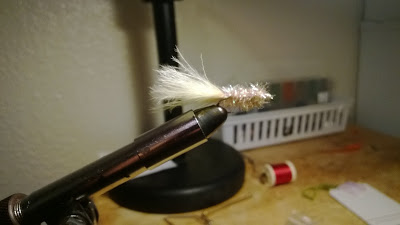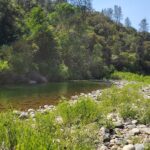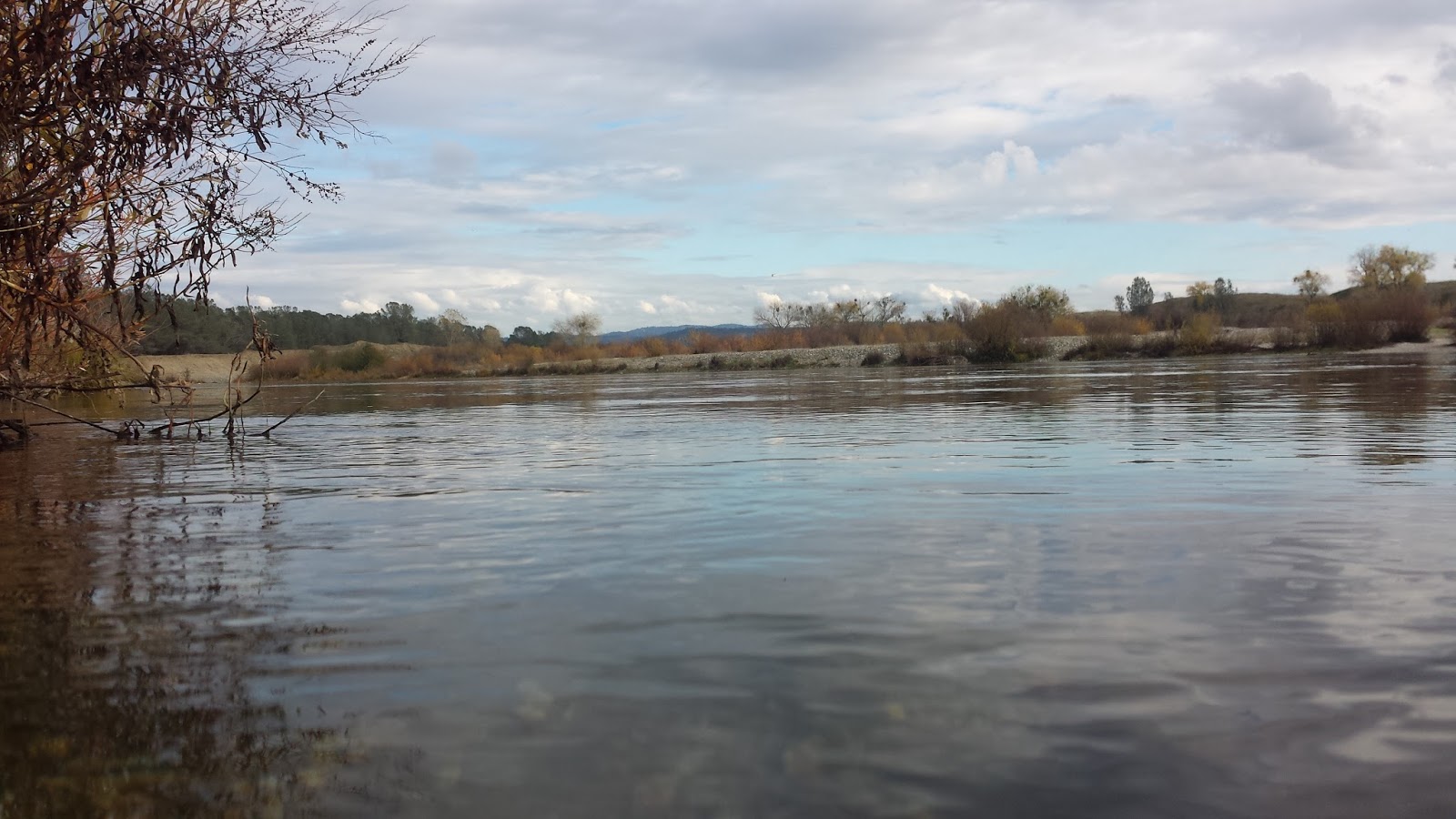 |
| Almanor Hex Sunset |
The hex hatch and the damsel migration are two of California’s most famous fly fishing attractions. Both the hatch and the migration draw in visitors from all over the country to beautiful Plumas County.
Timing can be everything when it comes to catching the hatch. Too early and the fish won’t be keying on them, too late and the fish will be too full from gorging themselves. Factor in weather conditions, water temperature, and the crowds and you have your timing equation.
Manda and I pushed our visit to Quincy from last week to this week in order to catch the warmer and hopefully more productive weather.
Lake Almanor
The hex were in full swing at Almanor. After packing all my fishing gear and the kayak for the missus, we set off to the lake at around 6:30.
I was a bit worried that we’d be late but luckily the bugs weren’t popping yet. There were a lot more people than I expected when we arrived at Geritol Cove at around 7:30. I estimated about fifteen plus people some in tubes, others in boats, and a few on the bank. Most of the anglers were fishing closer to the boat ramp rather than the cove.
My set-up for this trip was a 6WT rod with a ten foot extra fast sinking versileader with a nymph and a dropper.
 |
| Anglers Awaiting The Hatch |
Floating and casting from one spot to another produced nothing. I observed very few hook-ups throughout the evening despite the hundreds of hex that were coming off. Once the majority of the bugs were on top, I switched to a dry cripple in hopes of catching something on top. Adrenaline overcame me as I finally rose a fish but too quick of a hook set ended my night with zero fish in the net.
Many anglers who were also anticipating a fish-on during the hex emergence were left disappointed. The waddle of shame.
 |
| Land Ho! |
Butt Lake
Just south of Lake Almanor lies Butt Lake, a smaller lake that also has a good population of hex and large fish. Left with dissatisfaction from the previous night and not willing to get skunked a second night, I needed some local intel.
Fishing hex nymphs off the bottom will always produce the most fish. Fish primarily target the nymphs that are emerging through the water column rather than the the duns that are on the surface. Last night I felt like I wasn’t getting down deep enough. I needed a fly line that could get my flies to the bottom.
 |
| New Fly Line |
There is a small fly shop in Quincy that I’ve probably driven past over a thousand times and never been in. This is where I met Allen, the owner, who helped solve my problem on which fly line I should use. He suggested a Teeny-200 with a long ten foot 3x leader by the dam. Time to give it a go.
 |
| Butt Lake |
This was our first drive to Butt Lake and we found that Pratville-Butt Reservoir Road was a little dirty but well-maintained. We arrived at the dam at about 5:30 and was surprised to find no one fishing. There wasn’t a single person on the lake. Were we at the right place?
There weren’t any good flat spots to launch near the dam so we had to walk our flotations down to the bank. A bit of a pain but no biggie.
 |
| Her Taking a Picture of Me Taking a Picture of Her |
The lake was cool and clear, excellent for floating. After floating around for about twenty minutes and giving the new rig a try with a slow two strip retrieve, I finally caught my first fish of the day on a hex nymph. Not quite what I was looking for but better than nothing. A smallmouth bass.
What I was doing was working so I kept to it. My next take is a good one. You know that feeling when you have something big on the end of your line? This was one of those times. Huge silver sides flashed as the fattie surfaced. Holy shit! Big runs, high jumps, and loud splashes. Good thing I brought a big enough net.
 |
| First Fish – Smallmouth Bass |
 |
| Second Fish – Giant Bow |
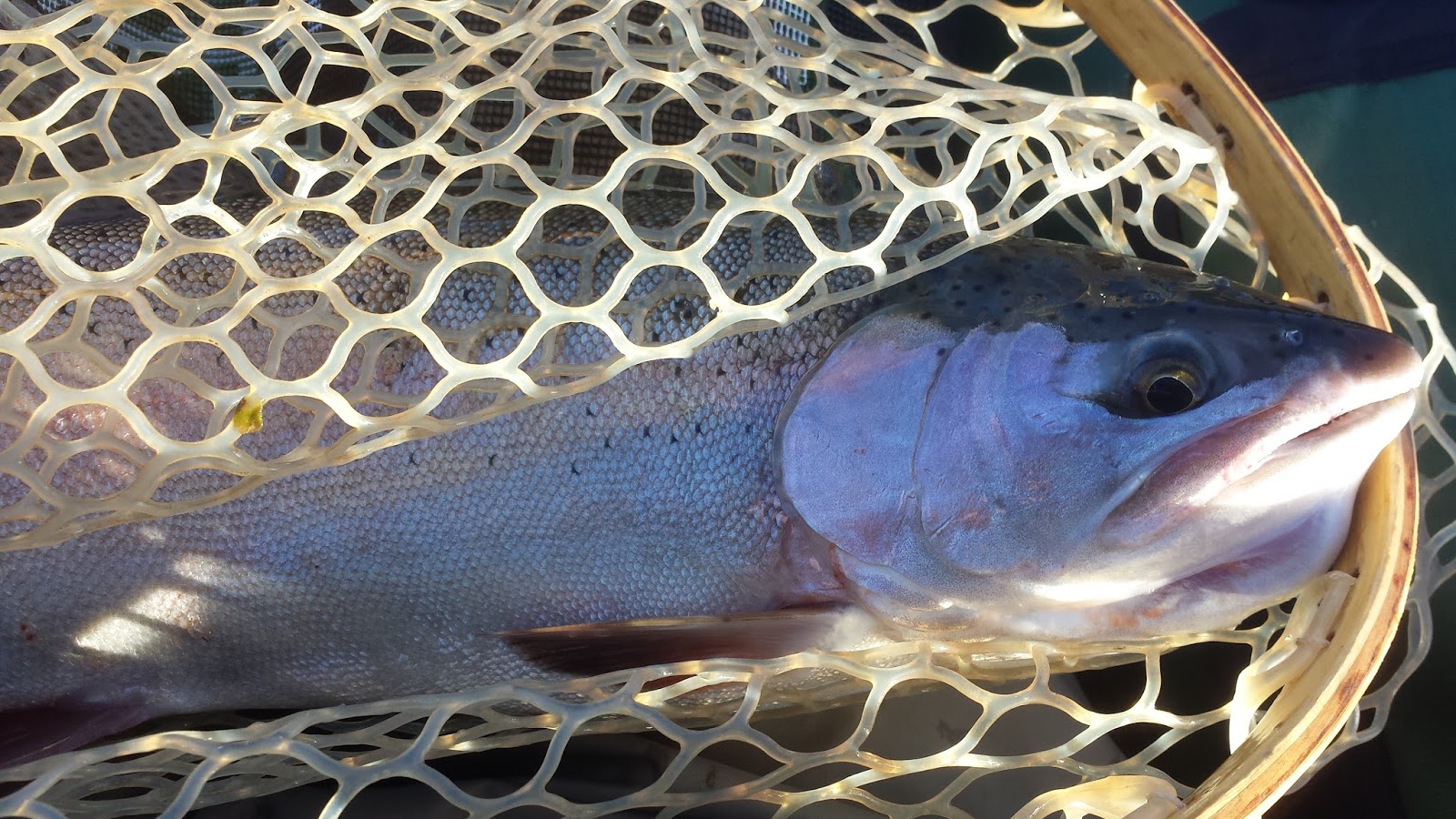 |
| The Thickness! |
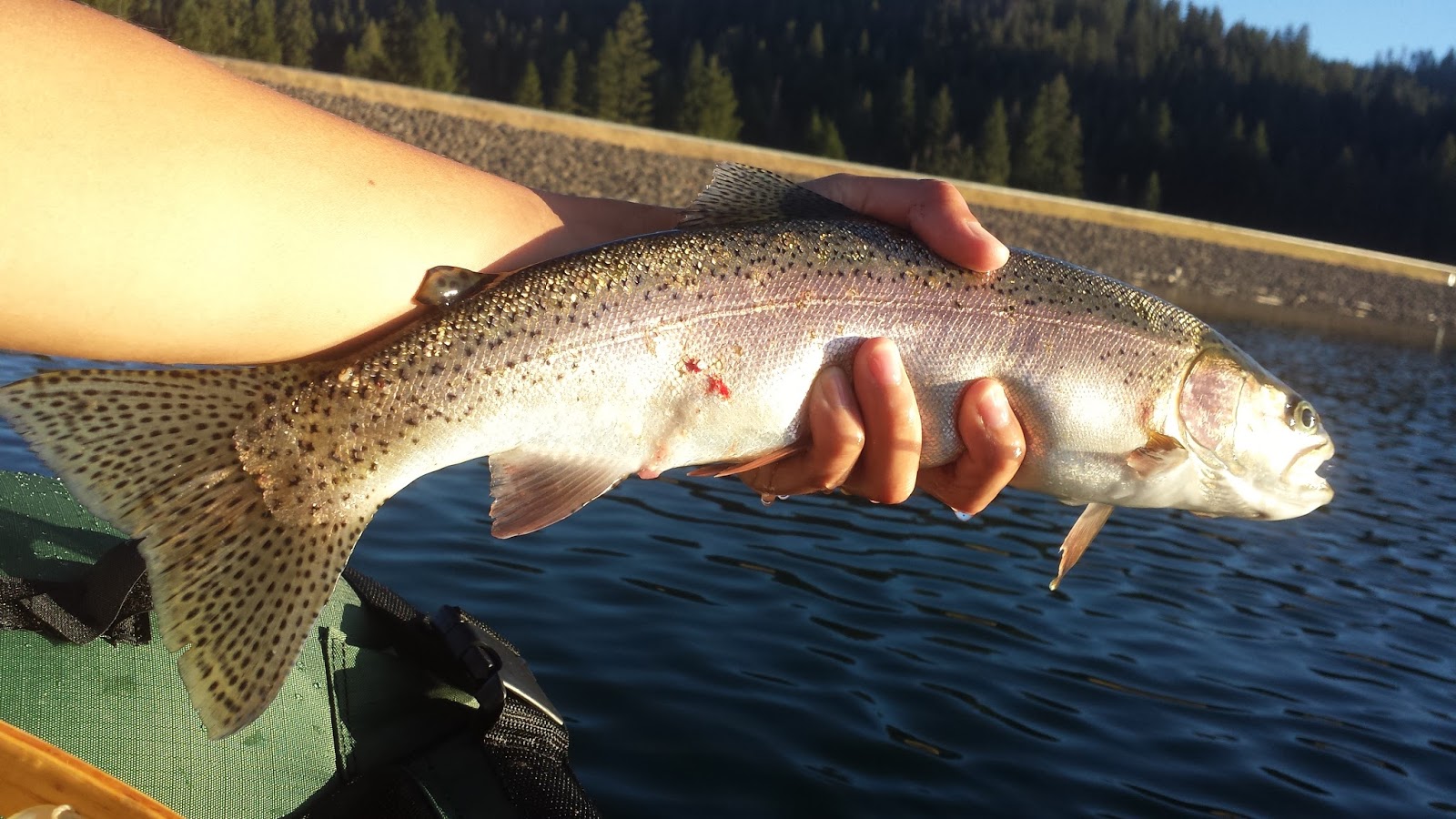 |
| Third Fish – Nice Streamline Bow |
Throughout the day I landed one more bow and lost two more big ones. One of those bruisers actually bent my hook! Once I was finished fishing I had Amanda drag me back to shore on her kayak while I acted as a rudder. Definitely a better day than yesterday.
Lake Davis
To complete our stillwater adventure we planned our last trip to the famous Lake Davis. “Not a lot of fish but they’re catching big ones,” reported Allen when I asked him about the lake.
 |
| Jenkins Cove flats |
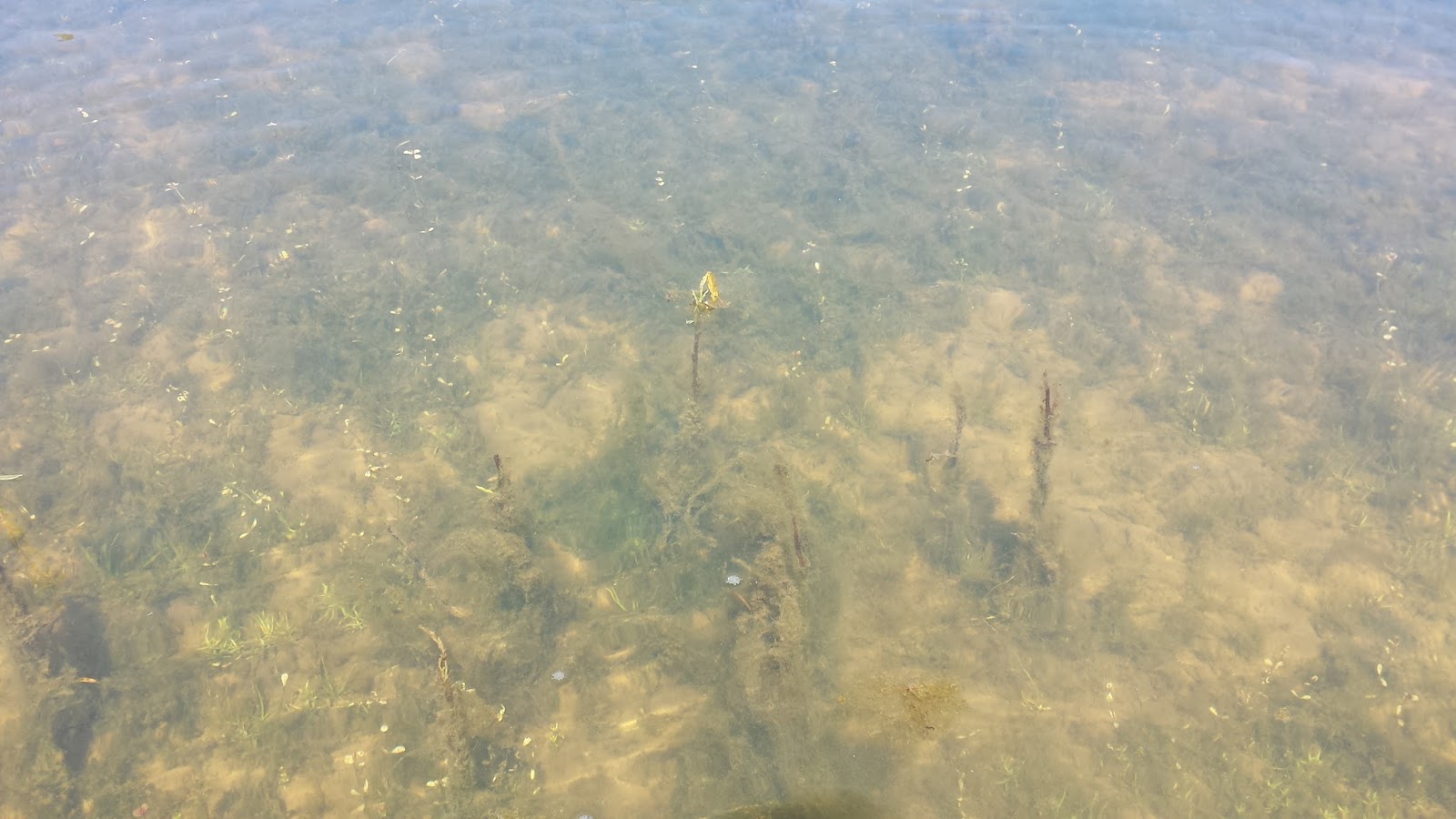 |
| Nice Shallow Weedbeds |
 |
| Pelicans Too |
I’ve heard a lot about the Lake Davis damselfly hatch. Nymphs migrate from the lake to the bank where they molt into flying adults and complete their life cycle. A few bugs here and there that get the fish excited. Neat right? Wrong! How about hundreds and hundreds of damselfly nymphs wiggling towards the bank to molt?
I was amazed to find how many damselflies there were at Lake Davis. As you wade the flats you can find these little wigglers swimming all over the place. Their were tons of adult damselflies fluttering throughout the lake as well. It’s totally obvious how these fish get so big and what they are eating to put on so much weight.
 |
| Damsel Wiggling To The Bank |
 |
| Attempting to Match the Hatch |
In the morning we drove to Lake Davis and settled for Jenkins Cove. “I’ve been coming here for a few days and the fishing has been really slow,” stated an angler before leaving to try a new spot. Not the best of news…
I didn’t have a lot of time to fish so I needed to make the most of it. Time to learn how to fish the migration in four hours.The majority of anglers both wading and floating were fishing near the main road. If I’ve learn anything from fly fishing it’s that the fishing gets better the further you move away from the crowd. I hiked and covered quite a bit of water before I got my first take. A big fat stillwater bruiser but because the take was so subtle I didn’t get a good hook-up. Damn.
The saying goes don’t leave fish to find fish. I kept calm and fished on and finally hook a good one. Luckily no snaps on the 4x tippet and my first Lake Davis bow in the net. One of the big ones too.
 |
| First Lake Davis Fish Ever |
I kept fishing and missed two more huge bows before the wind starting howling. Beautiful and fun lake to fish. Thank goodness for beginners luck! What an excellent way to end the trip. Now that I have the stillwater fever I’m going to start looking for some good lakes around the Yuba City area to fish. There are some big fish living in these lakes!





















